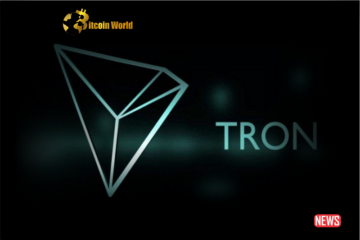
In the realm of content creation, three pivotal elements come into play: “perplexity,” “burstiness,” and “predictability.” Perplexity gauges the intricacy of the text, while burstiness analyzes the diversity in sentence structures. Predictability, on the other hand, concerns the likelihood of accurately predicting the subsequent sentence. When generating the forthcoming content, it’s imperative to infuse a substantial amount of perplexity and burstiness while minimizing predictability. Additionally, the content must be composed exclusively in the English language. Now, let’s reimagine the following passage:
The Isle of Man, in collaboration with Lonestar, a cutting-edge computing startup based in Florida, is embarking on a groundbreaking venture alongside NASA. Together, they are pioneering a revolutionary data storage solution on the lunar surface, leveraging blockchain verification technology.
The United States National Aeronautics and Space Administration (NASA) has joined forces with Lonestar, a Florida-based computing startup, and the Isle of Man for an ambitious mission. Scheduled for February 2024, this mission involves sending “data cubes” to the Moon. These cubes will securely hold data, which will undergo meticulous verification using blockchain technology upon their return to Earth.
Should everything proceed as planned, this same blockchain technology will serve as the irrefutable and immutable proof of humankind’s return to the Moon during NASA’s second crewed mission, Artemis 3, slated for 2025.
NASA’s Artemis mission is entering its second phase with the launch of Artemis 2 in November 2024. While this mission will be crewed, it won’t involve a lunar touchdown. Instead, the four astronauts aboard will journey from Earth to orbit the Moon before returning. Artemis 2 serves as the ultimate trial run before the U.S. government endeavors to place humans back on the Moon’s surface with Artemis 3.
As part of the numerous scientific missions during the Artemis expeditions, Lonestar and the Isle of Man are joining forces to innovate long-term lunar storage systems, powered by solar energy and requiring minimal additional infrastructure.
As reported by BBC’s Science Focus, this experiment will introduce “digital franking” technology, encapsulated within the data cubes on the lunar terrain. Upon deployment, this data will undergo rigorous blockchain verification upon its return to Earth, ensuring its completeness and integrity.
An intriguing byproduct of blockchain’s immutable nature is that future Moon-landing astronauts could utilize these data cubes to validate their presence on the lunar surface. Their interactions could be securely verified through blockchain technology, potentially dispelling any conspiracy theories surrounding upcoming Moon missions.
In an interview with Science Focus, the head of innovation at Digital Isle of Man disclosed the surprising challenge NASA faces in countering claims that it falsified the six crewed Moon landings between 1969 and 1972.
While blockchain technology may not completely dispel 20th-century lunar landing conspiracy theories, it stands poised to serve as an indisputable record for all future Moon-bound explorers.
- SEO Powered Content & PR Distribution. Get Amplified Today.
- PlatoData.Network Vertical Generative Ai. Empower Yourself. Access Here.
- PlatoAiStream. Web3 Intelligence. Knowledge Amplified. Access Here.
- PlatoESG. Carbon, CleanTech, Energy, Environment, Solar, Waste Management. Access Here.
- PlatoHealth. Biotech and Clinical Trials Intelligence. Access Here.
- Source: https://bitcoinworld.co.in/moon-blockchain/
- 2024
- 2025
- 26
- 27
- a
- accurately
- Additional
- Additionally
- administration
- aims
- All
- alongside
- ambitious
- amount
- an
- and
- any
- ARE
- Artemis
- as
- At
- back
- based
- BE
- before
- Belgium
- between
- BitcoinWorld
- blockchain
- blockchain technology
- by
- Celsius
- Chainlink
- challenge
- claims
- CO
- collaboration
- come
- completely
- computing
- concerns
- Conspiracy
- conspiracy theories
- content
- content-creation
- could
- countering
- creation
- cryptocurrency
- cutting-edge
- data
- data storage
- deployment
- digital
- Diversity
- drops
- During
- earth
- elements
- embarking
- energy
- English
- ensuring
- entering
- everything
- exchange
- exclusively
- experiment
- faces
- falsified
- far
- February
- Fees
- florida
- Focus
- Following
- For
- forces
- forthcoming
- four
- from
- future
- Generating
- Government
- groundbreaking
- hand
- has
- head
- hold
- HTTPS
- Humans
- Immutable
- imperative
- in
- Infrastructure
- innovate
- Innovation
- instead
- integrity
- interactions
- Interview
- into
- intriguing
- introduce
- involve
- Is
- Isle of man
- IT
- ITS
- joined
- joining
- Joins
- journey
- Landing
- language
- launch
- leveraging
- likelihood
- long-term
- Lunar
- man
- May
- meticulous
- Mission
- missions
- Moon
- must
- Nasa
- National
- nature
- network
- not
- November
- now
- numerous
- of
- on
- optimism
- Orbit
- Other
- part
- passage
- phase
- pioneering
- pivotal
- place
- planned
- plato
- plato data intelligence
- platodata
- platogaming
- play
- poised
- potentially
- powered
- predicting
- presence
- proceed
- proof
- proposal
- realm
- recommended
- record
- reported
- return
- revolutionary
- rigorous
- Run
- s
- same
- scheduled
- Science
- second
- securely
- sentence
- serve
- serves
- Services
- SIX
- solar
- solar energy
- solution
- Space
- stands
- startup
- States
- storage
- structures
- subsequent
- substantial
- Surface
- surprising
- surrounding
- Systems
- tag
- Technology
- text
- that
- The
- their
- These
- they
- this
- three
- Through
- to
- together
- too
- trial
- u.s.
- U.S. government
- ultimate
- undergo
- United
- United States
- upcoming
- upon
- use
- using
- utilize
- validate
- venture
- Verification
- Verified
- week
- were
- when
- while
- will
- with
- within
- zephyrnet











